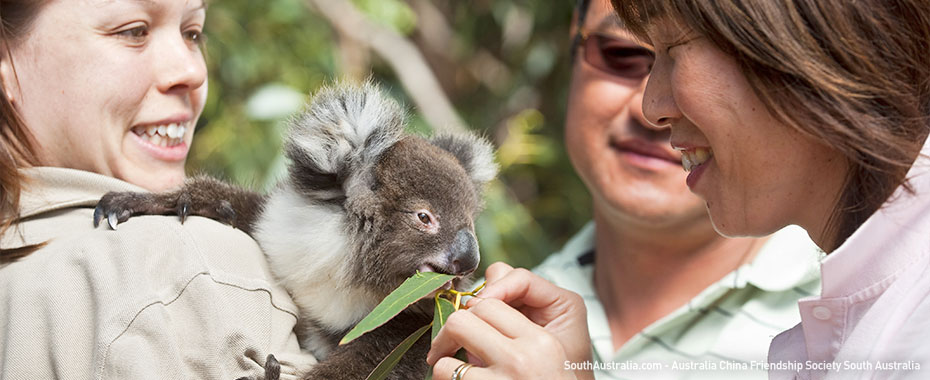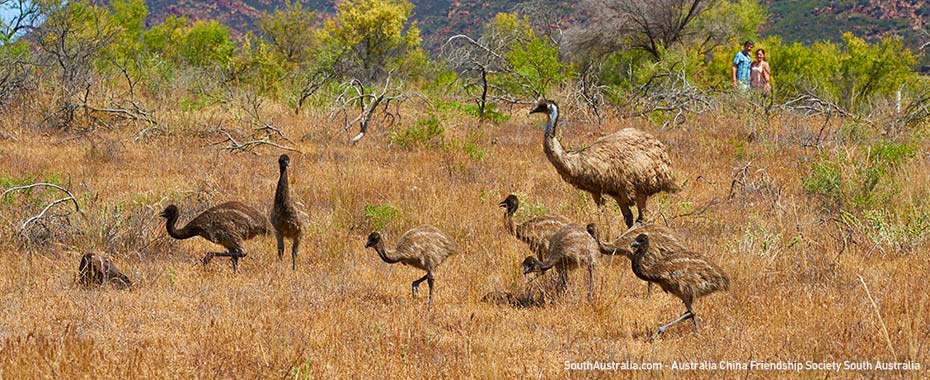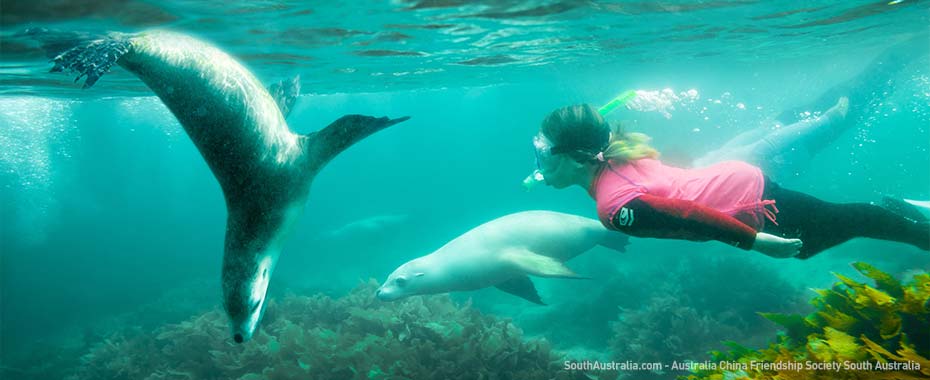South Australia has a diverse and wonderful range of wildlife experiences. From our giant Pandas at the Adelaide Zoo to the cuddly Koalas at Cleland. You can swim with dolphins off Glenelg, seals at Eyre Peninsula and for the brave there’s sharks near Port Lincoln…no matter what’s your interest, there’s plenty to experience with Australia’s wildlife!

Feeding koalas, South Australia

Emus in the wild at the Flinders Ranges National Park, South Australia

Swimming with sealions, Seal Cove, Port Lincoln, South Australia
Wang Wang (Net Net) was born on 31 August 2005 and Fu Ni (Lucky Girl) on 23 August 2006 both at Woolong Giant Panda Research Centre, China and moved to Adelaide Zoo together in November 2009.
Fu Ni is intelligent, playful and loves interacting with zoo keepers, most likely as she was a twin and therefore partially hand reared. She was an official Beijing Olympic Panda and in 2013 won silver medal for the Most Popular Panda Outside of China in a popular online competition. Fu Ni is smaller than Wang Wang and has a Mohawk-like cowlick in between her ears. Fu Ni loves any form of enrichment that involves a food reward, especially apple, pear and panda cake.
Wang Wang is a laid-back boy and more independent than Fu Ni most likely due to being a single mother-raised cub. He is about 10kg heavier than Fu Ni and has a more masculine appearance with a broader nose and sharp jaw-line. Zoo keepers love his Shrek-like ears that respond extremely well to sound in his environment. Wang Wang enjoys scent-based enrichment and loves nothing more than getting a big cardboard box filled with fresh sawdust and rolling around in it.
Both pandas are extremely well trained to participate in a variety of activities including medical procedures that enable keepers and vets to administer medicine, take blood samples and review their general health.
Wang Wang and Fu Ni are part of the international Giant Panda research, conservation and breeding program designed to preserve this endangered species.
In an effort to guide international efforts in creating and conserving suitable habitats for Giant Pandas, Zoos SA, alongside its Chinese counterparts, are helping to develop scientific knowledge about pandas’ nutritional requirements and reproductive biology.
Housing the only pair of Giant Pandas in the Southern Hemisphere has led to a completely new set of scientific data highlighting the differences between hemispheres and how it affects pandas’ nutritional requirements and reproductive biology.